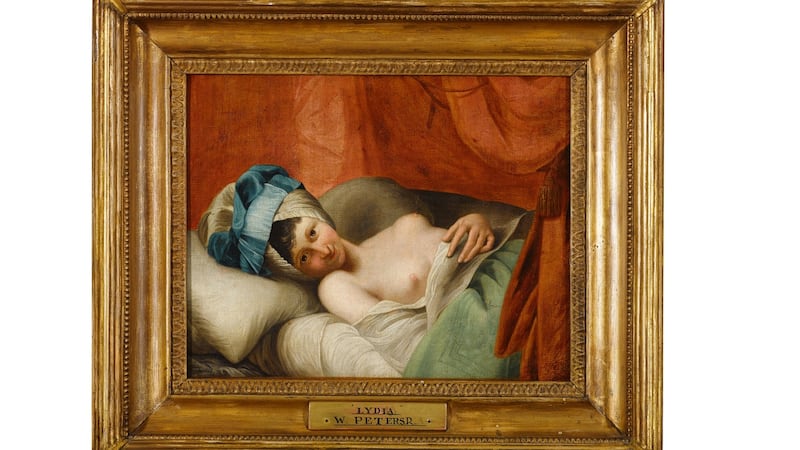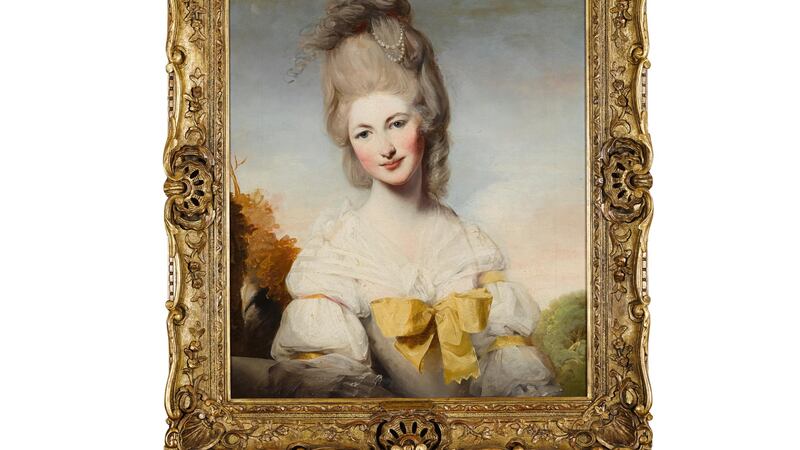In February 1764 a small advertisement on the back of Faulkner's Dublin Journal announced the country's first large-scale exhibition of public art for the following year.
It was a modest beginning for what would prove to be something of an artistic revolution. Within two years the Society of Artists had created the first purpose-built public art gallery in Britain and Ireland.
The first show was held in 1766 – three years before London’s Royal Academy held its first ever summer exhibition – and the elegant octagonal gallery at the City Assembly House on Dublin’s South William Street rapidly became a major focus for the Irish art world.
Thanks to the Irish Georgian Society, we can step back in time and experience this extraordinary slice of cultural heritage in the most immediate and vivid way: by actually attending an exhibition of 18th-century art in the original exhibition space.
It has taken the society five years and €2 million to fully restore the City Assembly House. Considering that the exhibition room has been neglected for many years and was used, at various times, as a courtroom, an auction house and even the headquarters for the Dublin Fire Brigade, it was remarkably intact – apart from the addition of two 19th-century windows.
“We’ve brought the space up to museum standards,” says Ruth Kenny, curator of Exhibiting Art in Georgian Ireland. “There’s smart glass in the lantern to protect against sunlight, and the temperature and humidity are controlled.”
The impressive octagonal design, top-lit by a lantern in the roof, was originally chosen to maximise wall space and minimise glare.
Kenny has put together what is effectively a 250-year-old jigsaw, tracking down more than 80 artworks from the period and overseeing the delicate job of hanging them, 18th-century style.
“This salon style of hanging really makes you realise how easy it is, nowadays, to hang pictures along in a single row,” she says. “In those days they would have had special exhibition frames which were very narrow so that paintings could be put up right against each other.”
With paintings coming on loan from the National Gallery, the Ulster Museum and private donors, this obviously wasn’t an option for the current show. But with more than 80 works packed into this modestly-sized space, there’s plenty to admire.
Exhibition catalogue
“The idea was to get as many works as we could which were originally displayed in this room,” Kenny explains. “We also have paintings by other artists from the time which might have been exhibited here, although we can’t always be sure. Catalogues in the 18th century were rather vague. They would just say, Portrait of a Lady, or Portrait of a Gentleman. So we don’t know which lady or which gentleman. ”
The present show features a gorgeously illustrated and hugely detailed exhibition catalogue with original research by Kenny, her University of Limerick colleague David Fleming and the art historian William Laffan.
Eighteenth-century artists could, Kenny says, be a rowdy lot.
“To get the best spots on the walls there was a lot of competition, which sometimes ended in fisticuffs. Above the fireplace was the top spot. And they ran a line along the wall about eight foot from the ground, which was also a coveted position.”
The punters could be equally boisterous. During the annual show, Kenny writes in her catalogue essay, the gallery “would have been a crowded, convivial place with fashionably dressed visitors sharing and discussing catalogues, peering closely at the exhibits, climbing on benches for a better view or ignoring the artwork altogether for the chance to talk, flirt and be seen.”
The 80 works in the show range in size from Gustavus Hamilton's tiny portrait of Catherine, Countess of Shannon, framed in a gold bracelet setting and painted on the occasion of her marriage, to Henry Brooke's enormous The Continence of Scipio, on loan from the National Gallery of Ireland.
“It’s huge. We actually had to do a dummy run with a carry frame to make sure that we could get it up the stairs,” Kenny says.
There are a number of landscapes on display, offering views of celebrated Irish beauty spots in Wicklow and Kerry – though Thomas Roberts’ painting of the village of Belturbet, Co Cavan demonstrates that even in 1769, artists were going out in search of the unexpected and unusual.
Historical paintings weren't as highly prized in Dublin as they were at the Royal Academy in London, but John Trotter's Portrait of a Volunteer Officer (main photo) is included – though the officer, with his glazed expression and lightweight spear, doesn't look particularly menacing.

Two of the most striking pictures in the show are Matthew William Peters's overtly erotic A Woman in Bed (Lydia), which was kept behind a curtain in the house of a wealthy London aristocrat, and his portrait of the radiant 19-year-old Lady Elizabeth Compton, who looks as fresh and radiant as the day she was painted.

Commercial end
Francis Wheatley invokes the image of the taking of Christ in his dramatic painting of the blindfolding of Parolles from Shakespeare's All's Well That Ends Well.

Among the works on paper are Hugh Douglas Hamilton’s strikingly informal pastel portrait of Sir Charles Compton Domville and his son and Robert Healy’s portrait of the exquisitely fashionable Anne Trench, Countess of Clancarty, in black and white chalk.
There are also paintings which would, in their day, have represented the most commercial end of the art market. Samuel Dixon’s innovative embossed images of birds, fruit and flowers, were made in his shop on Capel Street using copper plates. Hand-coloured by apprentices and sold by the dozen in black lacquer and gilded pearwood frames, they were so popular that in 1751 Dixon published an advertisement warning buyers against fraudulent copies: genuine Dixons were, he advised, “sold nowhere but in his own shop and at Mrs Breton’s, Cork”.

“We’ve tried to reproduce the range of genres and media which would have been included in the 18th century,” says Kenny.
"There would have been works in glass and works in hair. We haven't been able to track any of those down, but we do have one wax work, Samuel Percy's Portrait of a Man in Profile. It's slightly macabre – but we're giving him an outing anyhow."
Exhibiting Art in Georgian Ireland: the Society of Artists’ Exhibition Recreated, City Assembly Rooms, South William Street, Dublin until July 29th. Monday to Sunday, 10am to 5pm. Admission free.
Photographs of artworks by Gillian Buckley, David Davison, James Fennell, Dara McGrath, courtesy of the Irish Georgian Society













